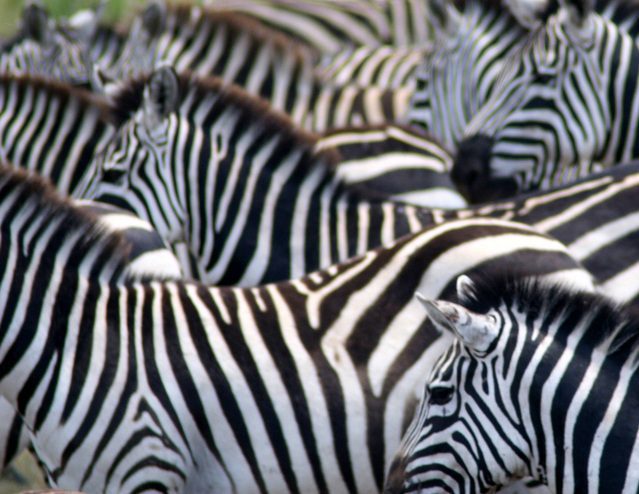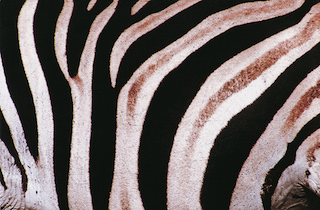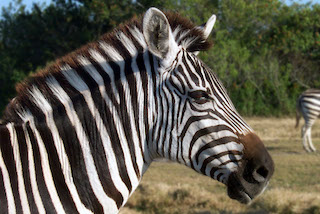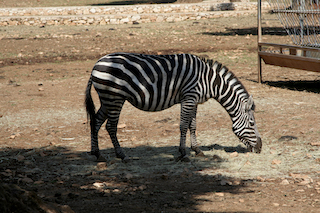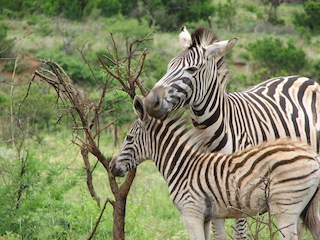Travel Through The Savannahs Of Kenya To Get To Know The Zebras
Communication
Zebras use different vocal calls such braying, barking and snorting to communicate. They also use various facial expressions to connect. For example, they can turn their ears in any direction to express their mood such as pulling them backward when they are angry and keeping them erect when feeling calm. They reinforce their bonds by nibbling on each other.
Migration
Every year, thousands of zebras begin the long journey from Tanzania to Kenya covering a distance of 1,800 miles to find food and water. This annual trek exposes them to a myriad of dangers. But it is awe-inspiring to watch such massive herds migrate across Serengeti plains when you travel through the savannahs of Kenya.
Taming
Zebras cannot be tamed, domesticated or trained due to their nature and can only survive in the wild. The kick of a zebra is so powerful that there are several cases of zebras killing even lions with a kick. They are also unpredictable and inflict obnoxious bite wounds when people get too close to them. Moreover, field scientists determined that it is not humane to tame them because to do so it was essential to change their natural instincts drastically. This requires some very intense treatment which is deemed to be cruel. Hence, although attempts were made in the past to train zebras, they were abandoned due to these reasons.
Hybridization
Zebroid is the term referring to any hybrid with zebra ancestry. Zebra hybridization has been in existence for a century. Zebras are closely related to horses and donkeys. Zebras have been able to breed with other species of equine such as a horse or a donkey to produce hybrid foals known as a zorse or a zonkey. Zonkeys and zorses are infertile. Several such hybrids now exist around the world.
Species of zebras
Travel through the savannahs of Kenya to get to know the 3 species of zebra are Grevy zebra, mountain zebra and plains zebra. Grevy zebra is the largest of zebra species. With its excellent sense of smell, it can sometimes find water flowing underground. Mountain zebra, an evocative icon of Africa, is the most gregarious species of zebras. The most distinct feature of mountain zebra is the presence of dewlap or a square flap of skin on the throat. Plains zebra, also known as common zebra or Burchell’s zebra, are the most populous species. It is considered as the national animal of Botswana and has its image as a symbol on its coat of arms.
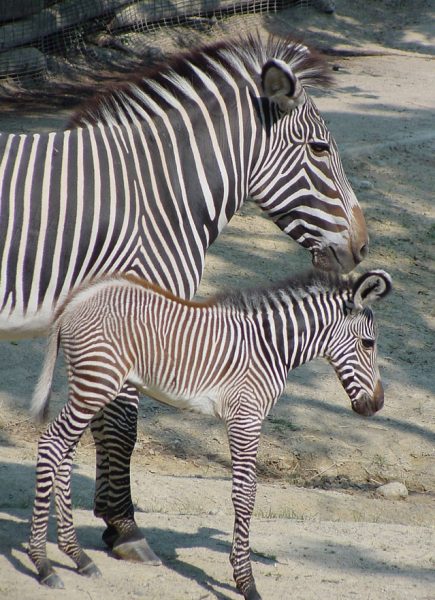
Travel through the Kenyan savannahs
1) Grevy zebra
In 1882, the then Emperor of Abyssinia considered zebra so regal that he presented a zebra to the President of France whose name was Jules Grevy. This led to the coining of the word Grevy zebra. It is the most beautiful of zebras. The pattern of its hide is like a painting. The World conservation union lists them as an endangered species. Grevy zebra has an open society where other males are tolerated within the area as long as they don’t interfere with the dominant male’s breeding activities. The 2 most stable relationships they have are a mare’s attachment to its young and a stallion’s attachment to his territory. The lifespan of Grevy zebra is longer in captivity than it is in the wild.
Habitat
Grevy zebras are predominantly grazers and occasional browsers. They can eat tough grasses that are inedible to other ungulates. Sometimes you find them grazing side by side with cattle. They are also seen with a herd of antelopes.
Features
Grevy zebra is taller than other zebra species. It has a large head, robust neck, white belly, black dorsal stripe, tan-colored muzzle, thick erect manes and large rounded ears. They appear mule-like. When Grevy zebra is alert, it stands to full attention with its neck arched and muscles tensed.
Herds
Grevy zebras don’t form permanent herds. Associations only last for a few weeks or even just days. Zebras have the largest areas of all living herbivores, up to 10 square kilometers. They mark the borders of these boundaries with piles and heaps of dung.
Breeding
Male zebras often sniff the markings of a female to determine if she is estrous. They mate with the mares that wander through the territories in search of water and grass. Territorial males communicate aggressively to assert their dominance by using several distinct pitches, flattening their ears, baring their teeth and kicking or biting other males. A territorial male is solitary except when mares arrive in breeding season. It retains his territory for up to 7 years. Bachelor males travel in pairs or in a group of up to 6 individuals.
Birth
Females tend to conceive every 2 years. Births usually happen with the onset of rains i.e. May to June as well as November to December. Pregnant females isolate themselves from the herd as birth approaches. Birth takes place lying down. The foal is born all ears and legs after 13 months inside its mother. The young’s hooves appear 1st with a full appearance in 8 minutes. The foal then frees itself from the amniotic membranes. It then crawls towards the mother’s head who licks it clean. The ritual is important in initiating maternal bond. Foals can stand after 6 minutes and run after 45 minutes. At the time of birth, foals weigh around 80 to 125 pounds.
Foals
Zebra foals lactate until 6 to 8 months. At this stage, imprinting occurs. An imprinted foal can recognize its mother’s distinct scent, vocalizations and appearance. Zebra foals are born with a reddish-brown or russet stripe. It gradually darkens to black as they age. Female foals disperse from their mothers at about 18 months while male foals often stay for up to 3 years. Stallions play little role in caring for the young.
Threats
Grevy zebras are no longer hunted for its beautiful skin or as trophies for export. Occasionally they may be killed for meat and other medicinal uses. But they face other major survival threats. Competing for water and food with rural people remains a primary threat. The competition is due to habitat loss brought on by overgrazing by livestock and irrigation schemes in highland areas. Also, droughts are rampant in the parks and conservancies of northern Kenya because rainfalls are unpredictable. During droughts, water is scarce. So, there is constant competition for the remaining available water between wild animals and domestic livestock. Often droughts have been the reason for the hostility between cattle herders and rangers. Although Grevy zebras can go on without drinking water for up to 5 days lactating moms must drink every other day to maintain milk production. For this reason, however, they have to make increasingly long journeys in search of water to male dominated territories due to land degradation. Such frequent trips affect breeding rates and result in high foal mortality. When resources become scarce, females may not come into oestrus. Hence, depleting water resources is also a threat to the species. Poorly regulated ecotourism may also affect breeding within protected areas.
Decimation
In the olden days, it was easy to find Grevy zebras where permanent water was available in the semi-arid grasslands or acacia savannas throughout Ethiopia, Eritrea, Djibouti, Somalia and Kenya. But not anymore. Today it is almost exclusively found only in northern and central Kenya as well as in north-eastern Ethiopia. In the 1970s, there were around 15,000 of them in Kenya alone. In Ethiopia, the current population of Grevy zebra has decreased from 1,900 in the 1980s. It is presumed to be extinct in Somalia because it has not been sighted there since 1973. Having said that, Grevy zebras have flourished in many conservancies where efficient management had catered to both pastoralism and wildlife.
Census
Historically, Grevy zebra census was done from the air. But it is hard to get the correct population estimate from aerial surveys since zebras like to hide under the shade of trees to avoid heat. Hence, detecting and accurately counting them was always a challenge. It required a mass effort on the ground. But for the 1st time a science-based census of Grevy zebras was undertaken in Kenya on the 30th and 31st of January 2016. It was named the Great Grevy’s rally. The Laikipia wildlife forum and the Grevy’s zebra trust spearheaded it. For this momentous event the main collaborators involved were Kenya wildlife service, Northern rangelands trust, Marwell wildlife conservancy, county governments of Laikipia, Isiolo, Marsabit, Lewa and Meru as well as Princeton university. They came together to collect photographic data of Grevy zebras. In total, 118 teams consisting of around 500 people participated in photographing these beautiful animals across the vast landscapes. Driving through the dusty roads ranging 25,000 km2 on 2 successive days, they took around 40,000 images of Grevy zebras that were geo-tagged. For standardization, they chose the right-hand side of zebras.
Princeton university contribution
The age-structured survey used advanced technology to gather critical demographic data. Princeton university team checked the individual profiles for sexing and aging. They used its exclusively developed software to identify and match each animal based on hotspots created from their unique stripe patterns. In this way, they were able to overcome the population census challenge yielding a more accurate estimate.
Census results
Census results was released on the 3rd of September 2016 at the Great Grevy’s ball in Nanyuki. It was a fun evening attended by the Head of Kenya wildlife service Kitili Mbathi, county government representatives and the US Ambassador Robert Godec. With a margin of error of 93, the results suggested that there are approximately 2,350 of these rare species of zebras in Kenya. That is 90% of the world’s population of Grevy zebras. In addition to the size, they also assessed the health of the populace. They found out that by and large, Grevy population is stable except in Meru due to a large number of predators there. The greatest population resides in Laikipia, an ecosystem in northern Kenya. Encouragingly, the population in Samburu were shown to be growing too with Isiolo and Marsabit not far behind. It was the most precise estimate of Grevy zebras that was ever taken. The census conducted was a culmination of unique partnerships, all of them having a vested interest in protecting these magnificent and beautiful animals. And they graciously gave their time voluntarily.
Conservation
The Grevy zebra census was followed by a meeting of the participants including Princeton university, ranchers, citizens, scientists and conservationists. A discussion ensued about the human intervention needed to conserve Grevy zebra. They also addressed the huge predation rates taking into consideration the resident’s viewpoints. Participants demonstrated goodwill to diligently carry out the conservation action points discussed at the workshop. The idea is to run 3 consecutive censuses with the intention of getting more people of the public at large and constituencies out there. Other recommended actions include protection of water supplies and better management of resources by involving the local communities in decision-making. The stakeholders that attended the workshop strongly recommended wisely and sensitively managing access to water resources in a manner that benefits human beings as well as wildlife. In addition, putting measures in place that would restore grasslands in a way that would allow both wild animals and livestock to cohabitate can mitigate habitat loss. Financial resources were also pledged to reinvigorate degraded land. Additionally, devolution as well as development of organizations and community conservancies will help facilitate rangeland recovery. Careful infrastructure planning is required to allow communities and wildlife to continue to live sustainably. Hopefully, they would be able to maintain the momentum and motivation of this collaborative effort.
Progress
Today, Grevy zebra census data is used to shape conservation strategies and to prioritize future actions. Scientists are working with local communities to reverse the sharp population decline of Grevy zebras. Conservation initiatives aim to accomplish this through tracking their movements, monitoring its condition and determining the causes of mortality. The challenge now is to let the populations grow by ensuring efficient management of optimal conditions. Nevertheless, we have seen some progress. Kenya and Ethiopia upgraded the status of Grevy zebra from game animal to protected animal. Hopefully, field conservation efforts along with captive breeding programs should yield results. The long-term aim is to reintroduce Grevy zebras to areas of their former range thereby reducing its extinction threat.
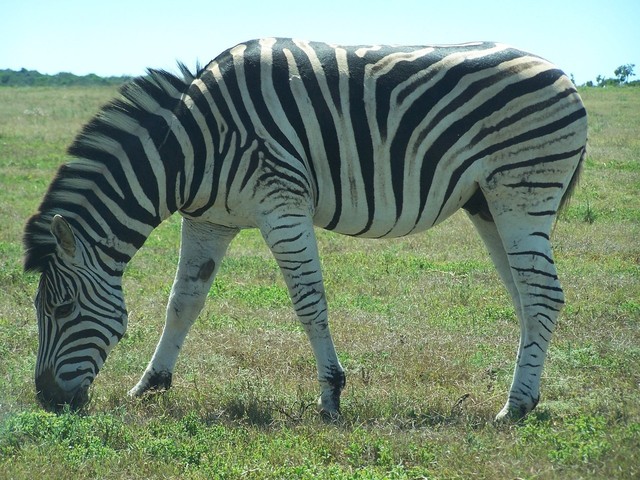 2) Mountain zebra
2) Mountain zebra
Mountain zebras are mostly active early in the morning and late afternoon until sunset. They visit mineral licks especially during summer. Like other zebra species, mountain zebras are mainly grazers. Their pointed ears reach 8 inches in length. Their manes of short hair stand upright from their necks. Mountain zebras take part in mutual grooming and usually take a dust bath daily. They have 4 single-toed hooves. They have vertical stripes on the torso and neck as well as horizontal ones on the haunches.
Range
Mountain zebras inhabit grasslands as well as rugged mountainous slopes and plateaus. They prefer escarpment areas with a rich diversity of grass and perennial water sources. They are good climbers and have hard hooves apt for climbing steep terrain. Mountain zebras are found in South Africa, Namibia and Angola and are the least common of the species.
Herds
Mountain zebras live in breeding herds consisting of 1 stallion, up to 5 mares and their young. This social structure remains stable over many years. Females usually stay in a pack for life. Surplus males live in non-breeding groups at times including young fillies too. Some establish a new breeding herd. Or they may chase off the alpha male to take over his herd. New stallions court with females of the herd for up to 3 years before the mares accept them.
Threats
Poaching, competition with livestock and loss of habitat to agriculture are the mountain zebra’s main threats. There is also a threat of crossbreeding of subspecies losing genetic diversity.
Conservation
Mountain zebras are vulnerable as they have suffered massive declines over the past century. But its population is now out of danger due to efforts at the local and national level. Hartmann zebra and Cape zebra are the 2 types of mountain zebra. Both are allopatric, meaning they occupy separate and non-overlapping areas. Some believe that Hartmann zebra and Cape zebra are different species. This is because they live in different habitats. However, genetics prove that they are closely linked.
a) Hartmann zebra
The zigzag forward grazing pattern of Hartmann zebra follows the contours of the terrain. They have fast-growing hooves. During wet season, they can go on for days without drinking water. Foals have a high survival rate because the adults defend them against predators. The mares expel their foals from the herd between 14 to 16 months of age.
Range
Hartmann occur in South Africa, southern Angola, coastal Namibia and Namaqualand region. They inhabit the high zone between the central plateau in Namibia and the Namib desert. It extends further into south-western Angola. In Namibia, Hartmann zebras occur in secured areas and in communal lands. The establishment of water points in Namibia has allowed them to live in unsuitable habitat.
Threats
The grazing ground is becoming scarce in Namibia due to lack of rains. Hence, Hartmann zebras live in direct conflict with livestock. Farming activities such as fencing prevent access to water. Another threat is poaching for food which has increased due to scarce resources. Zebra meat offers a large amount of food. In Angola, the situation had been made worse by war.
Conservation
The Etuis foundation, a non-profit organisation was established in Namibia. It conserves, protects and increases the number of Hartmann zebras. To help save this species, 1937 saw the establishment of mountain zebra national park. Information is limited as to the current trend of Hartmann mountain zebra. But in 1998 it numbered 25,059 in Namibia and fewer than 500 in South Africa. It is now a protected species in Namibia. In South Africa, more than 80% are owned by private landowners.
b) Cape zebra
Cape zebra was once referred to as donkeys in football jerseys. It is the smallest living zebra and the most restricted. There are none of them kept in zoos. They must drink water every day. Foals leave the herd either between 1 to 3 years of age or 3 months after a sibling’s birth.
Range
Cape zebra occur in all the mountain ranges of Cape province of South Africa. They are seen above sea level but move to lower areas in the winter. They live in Mountain zebra park, Kamanassie mountains and Karoo reserve. Some also occur in Baviaanskloof area and Gamka reserve. You can find a database of its status with the authorities of South Africa national parks.
Conservation
Cape zebras came very close to extinction in 1950 with their numbers dropping to 91. But it was saved. Today, there has been an increase at a rate of 9.6% per year in the last 50 years. Measures by many parties committed to saving this species are ongoing.
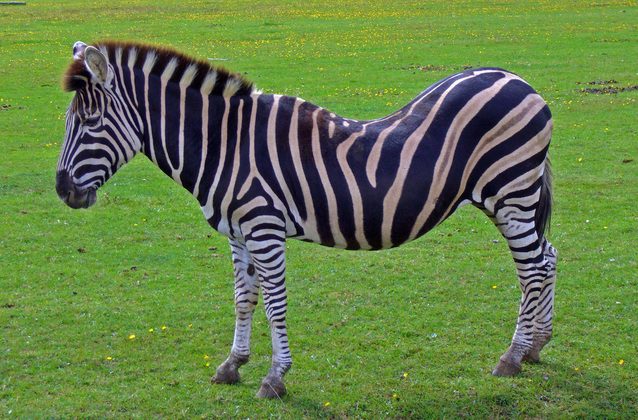
Travel through the savannah of Kenya
3) Plains zebra
Plains zebra is the most widespread equine on earth. While in some parts they live a sedentary lifestyle, in other regions like Serengeti they migrate in response to the availability of water. Plains zebras are herbivores. They obtain their food by grazing. They feed on certain species of grass. The plains zebras are often the 1st to enter and settle in well-vegetated areas of grassland. They can even survive upon coarse vegetation with little nutritional value as a result of a hindgut digestive system. After they trample the grass, the wildebeests and gazelles tend to move in. The removal of such tougher growth of grass from savannas plays an ecological role in allowing other grazers to gain access to tender growth. Due to constant grinding of food, its back teeth continue to grow throughout its life.
Subspecies
Plains zebras are diverse. Variations include coat patterning, the presence of a mane and the body size. There are 6 subspecies. The IUCN classifies 5 of the subspecies as least concern. However, the 6th subspecies, quagga, is termed as extinct. They lived in South Africa and was thought to be a separate species due to its unique coloring. They looked like a cross between a zebra and a horse. The last quagga died at a zoo in Amsterdam in 1883. Through a program, biologists are trying to revive it with DNA retrieved from preserved quagga pelts. The most common of the subspecies is Grant’s zebra. Much of what we know about plains zebras comes from work done with Grant’s zebra in the wild and zoos. Chapman zebra is another subspecies occurring in Angola and Namibia. The stripes of this subspecies are absent on the legs.
Range
Plains zebras live in eastern and southern Africa and is the most seen. They include Kruger park in South Africa, Etosha park in Namibia and Hwange park in Zimbabwe. They are also seen in Masai Mara in Kenya and Serengeti in Tanzania. Many of them live in secured areas across its range. Plains zebra is resilient. They appear to be doing well even in some unsecured parts. Plains zebras remain common in game reserves. Its status is less alarming than other zebra species. However, they are extinct in Lesotho, Burundi and Angola.
Water
Plains zebras need to have daily access to drinking water. They cannot survive very long without water. That is why they must be at least within 25 kilometers radius of a water source. During rainy season herds of around 10,000 zebras may form. They then migrate to follow the rains. It is the greatest wildlife show in the world.
Social system
A plains zebra’s social unit consists of a male called stallion, 1 to 6 females called mares and some offspring. These groups are known as harems. Mares in a harem exist in a hierarchy. The alpha female leads the team and mates with the stallion. She is hostile to any new women added. Thus, the stallion must shield them until she is subdued. Nobody disputes the male’s ownership of the harem. It has breeding access to the females. But it has to fight off the other males. If the males prove victorious, the male of the harem is driven away. He will then join a group of bachelors who have also been ousted or are too old to compete.
Matchmaking
At the onset of oestrus, the mares show signs of readiness to breed. They do it through a stance of straddled legs, lowered head and raised tail. All males compete for such females. The oestrus mares no longer show off once bonded with a mate.
Safety in numbers
Harems often join other families to form large herds. These herds will mingle with ostriches, antelopes and wildebeests while they graze. They prefer to be near other grazing animals to protect themselves against predators. Large numbers reduce predator attacks and also mean more eyes watching each other. Each one take turns standing watch. Their main predators are cheetahs, leopards, lions and hyenas. At nighttime, they retreat into open areas.
Conservation
Plains zebras are not a threatened species. The IUCN red list puts it as a species of least concern. They are widespread. Their numbers once were more than 750,000. There are about 150,000 plains zebras in Serengeti and Maasai Mara alone. But there are far fewer of them today than before. Like other animals in the wild, plains zebras are exposed to hunting, habitat loss and poaching. Expanding human settlements is a cause for concern too. Therefore, measures are needed to guard against further reductions.
Black and white stripes
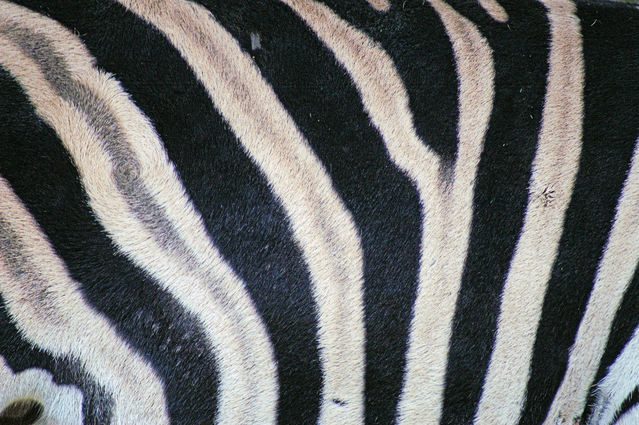
Travel through the savannah of Kenya
All 3 species of zebras have stripes that make them stand out from other grazers. The black and white stripes of zebras make them the most beautiful animals in the jungle. Each of the 3 species of zebras has its pattern. The narrow black and white stripes of Grevy zebra persist until above the hind legs. From there it forms a chevron pattern. The horizontal lines remain distinct up to their hooves. The bands on the tall and upright mane continue from the neck. Equally distinct is the broad black stripe along the back that is bordered by white color on the rump. The ears have a thick black stripe with white tips and the lines curve upwards. Mountain zebra has thin vertical lines on its neck and torso as well as broad horizontal lines on its haunches. The strips continue up to their manes. Under the belly, the stripes are white with a central black stripe. A unique feature is the gridiron pattern of tapered bands across the rump. Plains zebra has broad black lines that are vertical on the body and horizontal towards the back. The horizontal streaks are, however, variable. In some, in between the black and white stripes there are faint brown shadow bands. They also have underbelly bars.
Genetics
Genetics determine the striping patterns of zebras. It has to do with a pigmentation during the embryonic phase. In the uterus, the dark pigment melanin deactivates its function in certain areas of skin. This forms the black and white stripes.
Theories
Various theories have been put forward as to the function of zebra stripes. According to a school of thought, its was striped, but they lost it during the evolution of horses and asses. Zebra’s black and white stripes remain a mystery to science even today. They seem very out of place in the bush against a plain savanna background. Zoologists have yet to unravel the mysteries behind its striped suit. Scientists are not sure why zebras have not blended in with the browns and reds or why they have stripes. There are many theories to this riddle. Let us examine 2 of them.
Camouflage
The most long-standing theory was debated by Alfred Russell Wallace and Charles Darwin. It goes as follows. The stripes of zebras blend well into natural light. However, too many bars confuse predators. This is because they form an illusion because the streaks of a herd merge into a big mass. In other words, zebras running together as a pack appears like a giant striped blob. So, predators get confused. That makes it tough for predators to remain focused on a single zebra. Hence stripes in a herd of zebras have a camouflaging effect so as to keep predators away.
Identification
Another theory was that zebras identify each other in a herd because of the uniqueness of stripes. Their stripes differ so much that members can detect their own. It is as unique as fingerprints in humans. And in fact, people have used these stripes for identification.
Theories refuted
An in-depth study has refuted both the camouflage and the identification theories. A group from the University of Calgary and the University of California Davis visited 16 zebra sites in Africa. They tested these ideas. The project was supported by National geographic society. They discredited and rejected the camouflage theory. The studies done by them gave no evidence to that effect. They found that animals cannot distinguish zebra stripes beyond 30 meters at night or 50 meters in daylight. Moreover, they found that the predators could see the outline of zebras just as quickly as other animals. Also, the study did not yield enough support even for the other socialising advantage theory. According to this theory, zebra stripes stimulate group cohesion and grooming. But other animals related to zebras are also sociable. They are also able to recognise their own despite having no stripes to distinguish them.
Alternatives
Scientists refuted the earlier schools of thought as to why zebras have stripes. But they also attempt to list 2 possibilities. The stripes have a cooling effect, and it helps to fend off parasites that are common in hotter climates. According to the journal Royal society open science, no one theory teases out as the definite winner.
a) Cooling theory
There is a bearing between temperature and line patterns. Studies prove that zebras in warmer climates have more stripes to keep them cool, fresh and healthy. When air currents hit a zebra, it is slower over the white parts and stronger over the black parts. This causes opposing airflows. This serves to calm the zebra’s skin. In other words, stripes keep zebras cool in warmer climates. Zebras have lower surface temperatures than non-striped animals in the same area. The colour pattern deflects up to 70% heat.
b) Parasite-fender theory
New research shows that the stripes on zebras stave off disease-spreading insects. It also deter blood-sucking horseflies that detect only single-coloured fur. They are least attractive to a zebra’s hides. They don’t like to land on striped surfaces. Thus, stripes act as an insect repellant. Scientists from Sweden and Hungary published this in the Journal of experimental biology. They points out that zebra embryos start out with dark skin and go on to develop white stripes before birth. It evolved making them less appealing to bloodsuckers. Hence the striped coat pattern was a response to blood-sucking parasites. Ongoing future studies and field research may be able to solve the stripe-riddle of zebras. Or a whole new theory may emerge.
Zebra crossing

We come across zebra crossing almost daily but don’t think much about its origins. If you are in a town or city, chances are that you are sure to hit a zebra crossing at some point or another. It makes crossing the road safer giving the pedestrians right of way. The origin of zebra crossing is often disputed. But it is an fun piece of history and worth knowing.
History
Zebra crossing was born on the 31st of October 1951 in Slough, Berkshire in England. The aftermath of 2nd world war saw an increase in the number of motorists. The amount of traffic was growing year on year. The increase in traffic meant that accidents were high because the pedestrians were not used to cars. This increased pedestrian injuries and deaths. The other reason was that in those days, street crossings had metal studs. They were easy to spot by pedestrians but not so much by motorists until it was too late to stop. Therefore there was a need for safer ways to cross the roads. Hence, a more visible crossing was needed.
Black and white stripes
In the 1940’s, researchers tested many tests on different colours and patterns at around 1,000 sites around UK. But the black and white stripes proved to be the most effective. It gave drivers enough time to reduce the speed. Moreover, it was clearer for the drivers to see people moving across this pattern as opposed to some others. That’s how the white stripes against black tarmac made it the most visible street markings.
Moniker
Zebra crossing was never the original term, although it is a zebra-like pattern. Jim Callaghan, who was a Member of Parliament in 1948 and who later became Prime minister, visited the road crossing experiments at UK’s transport lab. Among many new ideas, the lab was also testing a design of black and white stripes. Jim Callaghan observed and commented that they looked like zebras. The name stuck and therefore it was him who coined the moniker. So, the original idea for these markings was his brainchild.
Beacons and bumps
Zebra crossings often have Belisha beacons. They add further visibility in adverse weather conditions or at nighttime. Initially, these beacons were just colored balls on two poles. They were then improvised to amber colored light orbs on top of striped poles on either end of the crossing, which then evolved to flashing lights. Motorists were expected to stop for pedestrians when they came across these signs. To further reduce road accidents a speed bump was added before the markings.
Stripe strikes celebrity status
Abbey road by Beatles used the black and white stripes on its album cover. This made the simple zebra crossing a part of pop culture. This crossing at Abbey road in northwest London is today a popular tourist site. It is the most famous zebra crossing in the world. Much to the chagrin of drivers, even today many tourists pose to create the famous photo.
Celebrity status or endangered status
In 1951 zebra crossings replaced the previous metal studs. However, accidents were still high in part because drivers stopped slowing vehicles. So, this risky led to the replacement of zebra crossings. Zebra crossings are inferior to other crossings that uses flashing signs and lights. Hence zebra crossings are being phased out in some parts of the world.
Other animal crossings
Zebra crossing started a long tradition of naming new crossings after animals. Pelican and puffin crossings use traffic lights. Pelican crossing features two poles of traffic lights and an icon to let the pedestrians know when to cross. However, puffin crossing is better than pelican crossing because it comes with a sensor that detects when pedestrians are waiting. A signal-controlled pedestrian crossing called panda crossing came into being in 1962. They had lights that detected the presence of both vehicles and people to calculate the right time to cross. But they soon abandoned it because the lights confused motorists. Then came pegasus crossing and tiger crossing. Pegasus crossing is almost identical to pelican crossing with a difference that they had a 2nd higher button for people on horseback. Tiger crossing also known as toucan crossing are black and yellow stripes painted on the road. Cyclists and motorists us them. In fact, there are many more animal-themed crossings all over the world.
Zebra symbolism
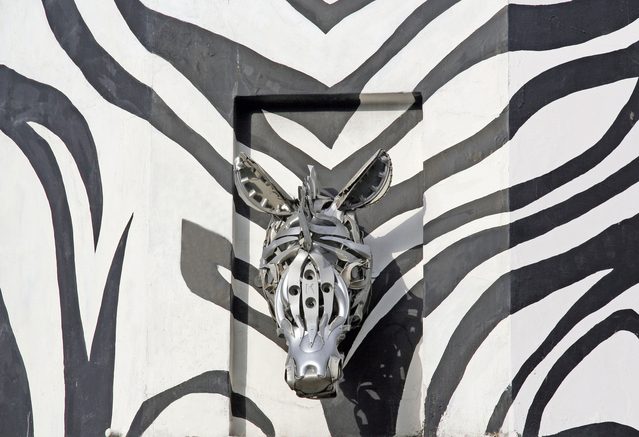
Zebra is a majestic wild animal. It has made its home in Africa. And because of its origin, most of it comes from Africa. Zebra has a deep meaning in shamanism, tribal traditions, psychology and many other ancient cultures. A zebra animal symbol represents community, freedom, balance and individualism. It is rather important to delve into a more meaningful discussion about why zebra stands for them. Or else, it would amount to nothing more than myths made up by our ancestors.
a) Community
Zebras have a very tight-knit and intimate social structure. They stick to its herd. They always prefer to clump in familiar groups for shelter and protection. Zebras get a profound sense of solidarity in numbers. They know their best chance of survival is when they stick together. It characterizes community, protection, society and family. Moreover, zebras are unable to sleep unless a herd member is awake standing guard.
Implication
Zebra animal symbol implies reliance upon community and the need for partnership. It teaches us the value of communal living for our comfort and safety against outside threat. Being in a community of like-minded people helps us get back on our feet when facing challenges. The symbolic meaning of zebra is that there is power in numbers. They suggest that we ought to be supportive members of our communities. You can create a powerful vibration and energy by banding together with other like-minded people. In that respect, zebras are like human beings. Although we are individuals with different thoughts and ideas, we also come together to survive. That way we make our existence in our society and on this planet earth more enjoyable.
b) Freedom
Zebras love being free and wild. It is impossible to tame a zebra although people have made numerous attempts in the past. They will never let humans change that anytime soon.
Implication
Human beings are born free. It is our fundamental human right to live our lives. The zebra animal symbol teaches us to love our freedom and not to be beholden to someone else’s rule. Don’t let false beliefs crush you or let anyone dominate you. Zebra salutes those who have been through a tough time but kept their free spirit. It symbolizes the free and wild spirit that lives in everyone. Because of this trait, the zebra spiritual totem is a symbol of freedom.
c) Balance
Zebras have black and white stripes. Black and white represent opposite meanings. Hence, they signify contradicting symbolism. Just like black and white are extreme poles, zebras are highly adjustable to any situation. They can be both adaptable as well as determined when it comes to survival. Because of this balancing attitude, a zebra always finds its way out of a tight spot in times of trouble.
Implication
Among many other things, zebra symbolism denotes that things are not as cut and dry as black or white. Everything must find balance in this world. Every aspect of life requires balance. Zebra stripe signifies balance and deeper spiritual meaning through the art of blending yin and yang. The dual aspect of the opposite yin and yang energies bring clarity to see new levels of truth. Zebras impart deep wisdom to those who consider the world as black or white by telling them to break out of that stifling mindset and to appreciate that there are always middle grounds in the world. For example, some people are neither black nor white. Be ready to recognize the differences in those individuals and to accept their alternative viewpoints. Such acceptance can open doors to new ideas. This paradigm shift can bring progress and prosperity in one’s life.
d) Individualism
Zebra is wonderfully unique in its design. Although it can only survive in a herd, a zebra never loses its unique stripe pattern. The patterns are like fingerprints of human beings. They allow team members to identify each other. It is unlike any other animal on earth. Thus, zebra stripes symbolize individualism.
Implication
Zebra’s unique design infers that we should value our individuality and remain stable in it. Each of us has distinct gifts to share and offer. Unconditionally accept yourself. Embrace your individual differences. Look at the big picture of who you are. Blending itself into a crowd without losing its individuality is an important aspect of zebra. Hence zebra animal symbol teaches us that we are matchless in our ways. We have to learn to blend in with the society and be part of the larger community. It urges us to exploit our exclusiveness for the common good of all. In short, keep up your individuality within the herd.
Caveat
People come across a zebra or a flock of them in dreams. Sometimes it happens in their waking life. It can symbolise any of the features mentioned above. However, you should not try and interpret it without taking account the context of your life. It can only lead to misinterpretation. Every life is different. Each one of us goes through various situations. Hence, even if 2 people see the same zebra, it can mean 2 different things. That is why it is important to not read too much into it. You need to let the seasoned psychoanalysts interpret it. They are professionals who spend their lifetimes learning analytical psychology. Analytical psychology takes into consideration the whole life before it gives a definitive interpretation of it. But beware because even then, it is subject to many errors and flaws.
To receive a colourful digibook about Zebra with videos, images and text, please fill out the following form or simply email us on safaris@safari-center.com

